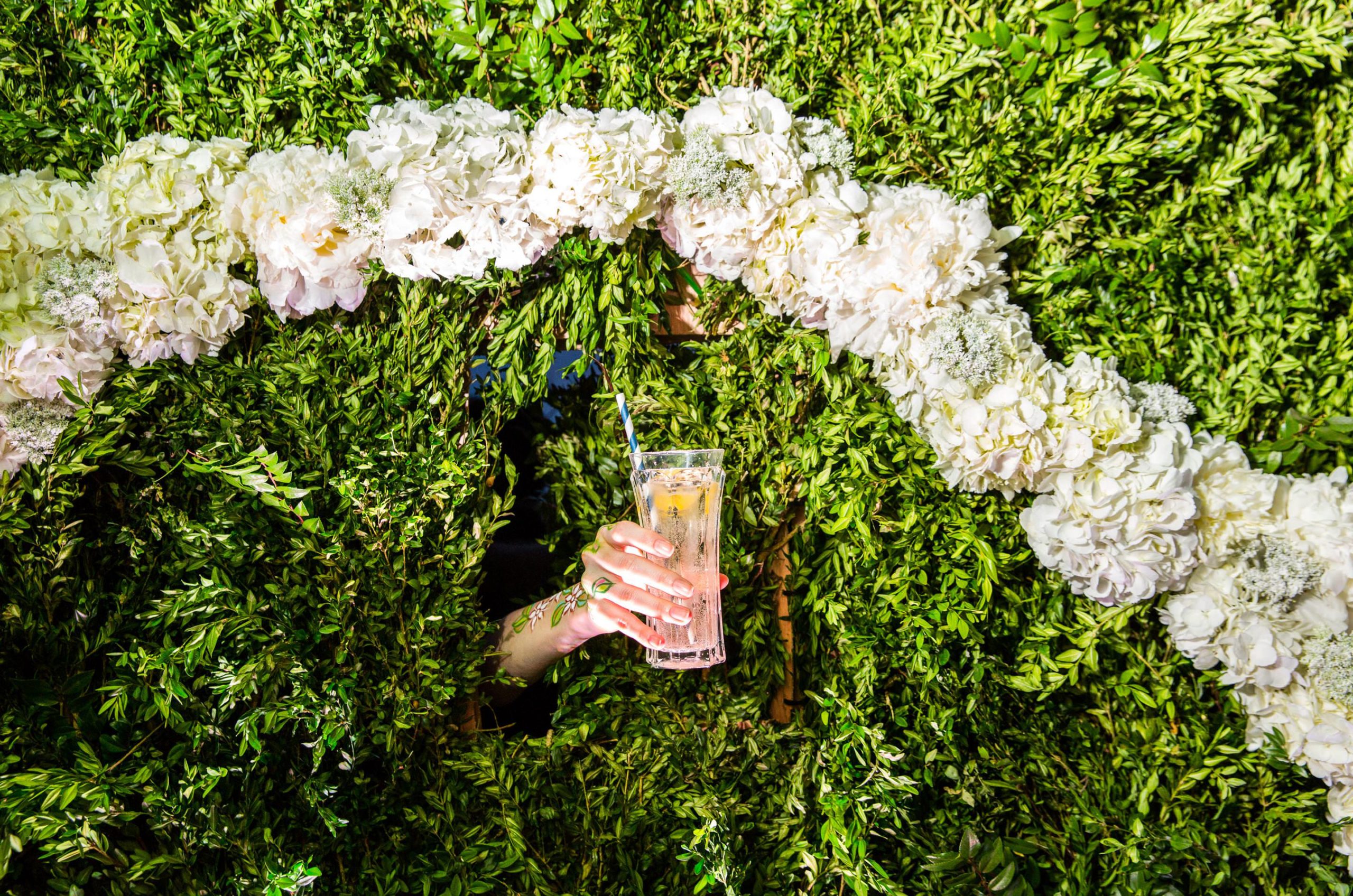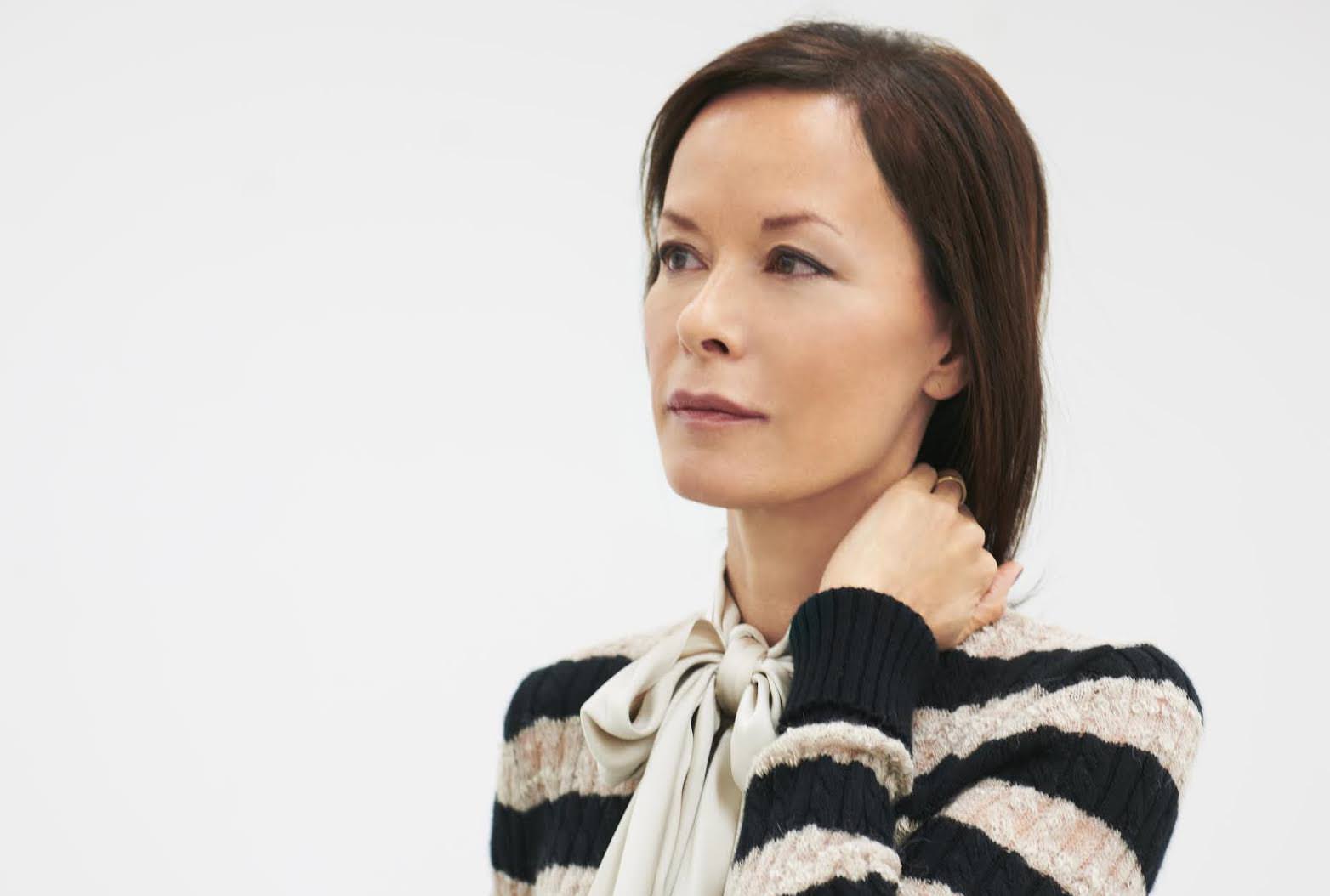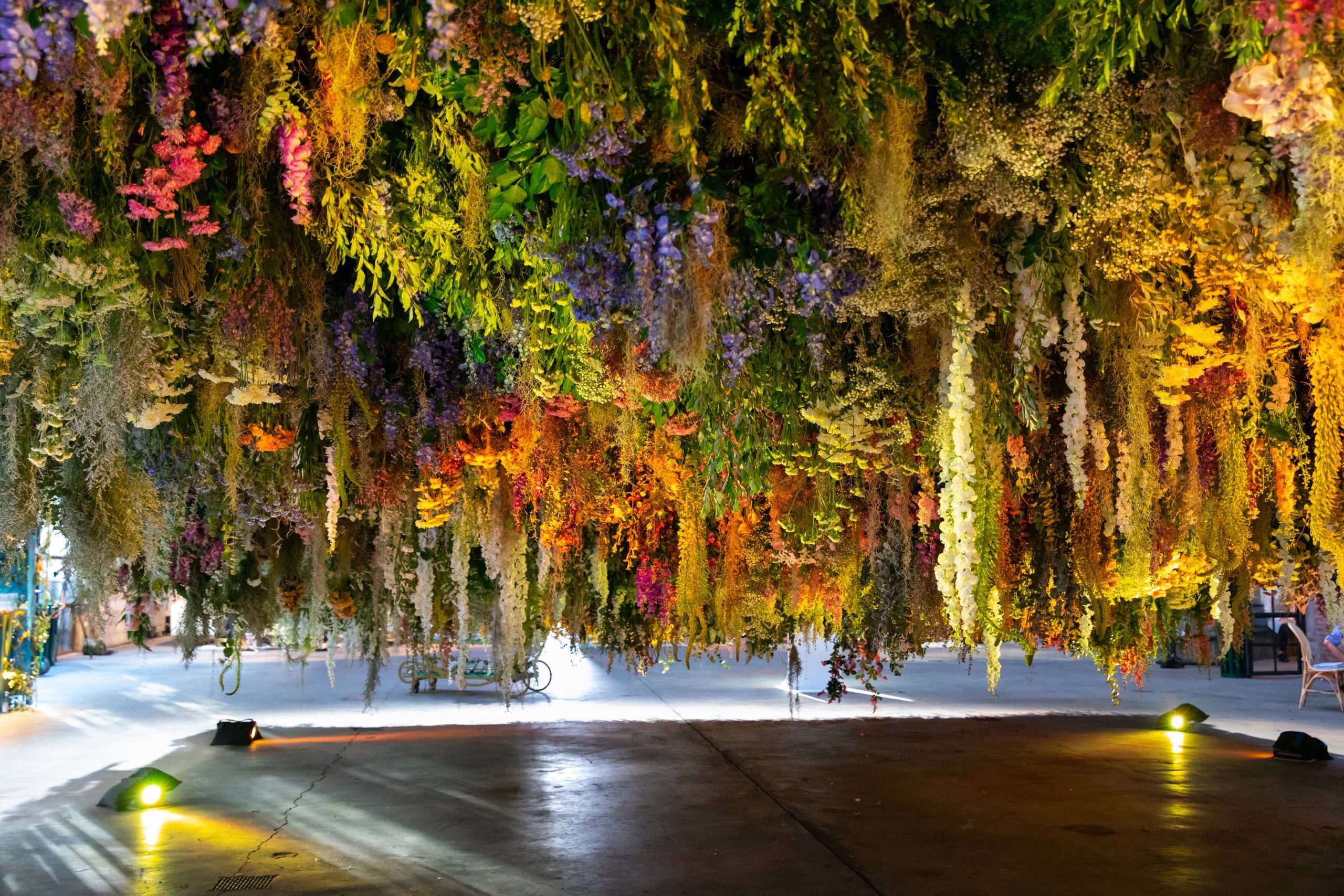The jewelry designer Bliss Lau has a special way of encouraging elegance. Her approach to jewelry is sophisticated yet expressive and features unique pieces that are both reserved and bold. Over the years, she’s exercised her role as an independent designer by creating apparel, accessories, and jewelry for herself and others. She even designed her own wedding ring.
Recently, to focus on creating moments of joy in isolation, she teamed up with St-Germain for a collaborative “Moment du Jour: Storia d’Amore” series on social media. The series aimed to redefine daily rituals and assist in elevating simple moments. Over the past four weeks, Lau’s videos featured bespoke pieces from her collection, paired with exclusive cocktails by St-Germain. It was complemented by a philanthropic component, making a joint donation to Black Lives Matter and encouraging followers to donate to ACLU.
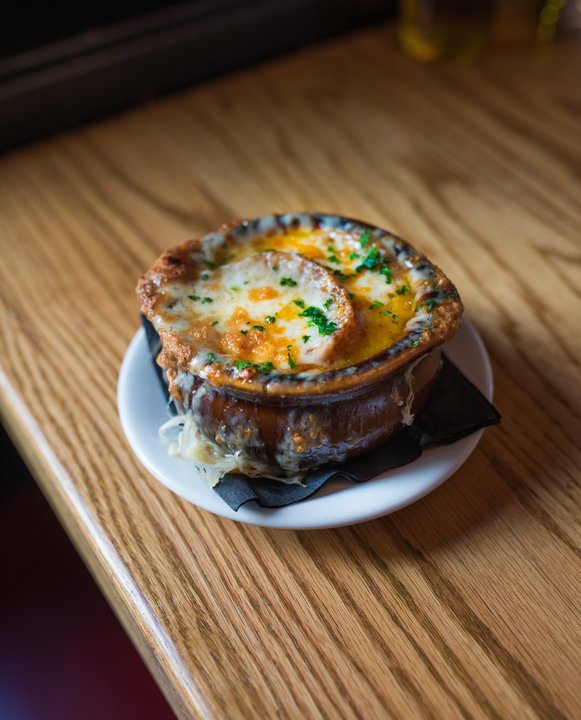
Photo by Jamie Jaye Fletcher, courtesy of Ajax Tavern at The Little Nell.
These efforts go deep for Lau—not just in her partnerships or designs, but in her behind-the-scenes approach to the business. In 2017, her label transitioned to using certified recycled precious metals for casing and last year, her brand became Fairmined Gold licensed. Her dedication to environmental sustainability has also pushed her to work with recycled diamonds, creating the Transparency Review, and continuing Centering Your Brand—a workshop for entrepreneurs that’s been running for ten years.
Whitewall spoke with Lau to hear her latest collaboration with St-Germain encourages memorable moments, how ethical luxury jewelry is possible, and what she’s working on next.
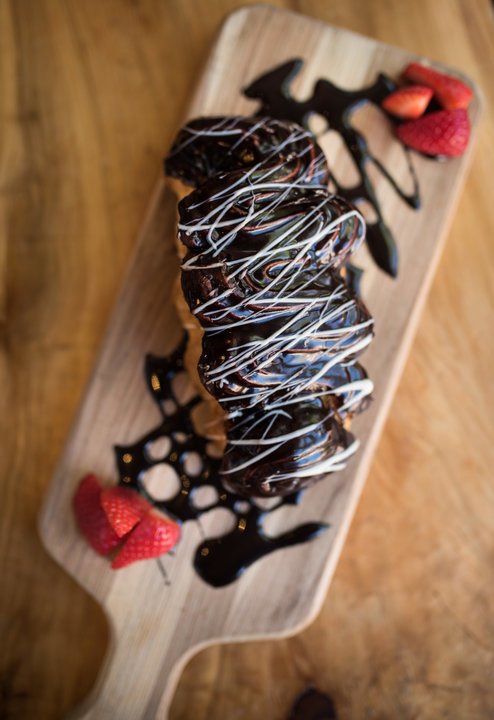
Photo by Jamie Jaye Fletcher, courtesy of Ajax Tavern at The Little Nell.
WHITEWALL: Can you tell us a bit about your creative journey leading up to founding your eponymous label?
BLISS LAU: The week after I graduated from Parsons, in 2003, I went to an open call for designers and sold my senior thesis collection to a store. I’ve been an independent designer ever since. I studied apparel but focused on handbags after graduating. I found myself starting and running a business at a very early age. The late great Opening Ceremony was the second store I sold!

Courtesy of Acquolina.
From age 22 to today, my professional, creative journey, the successes and failures, have all run in parallel to learning about myself.
I eventually transitioned into a type of body jewelry that I called Sensual Armor. In 2010, I met my partner Evan. Soon after, he proposed to me with a sketchbook, the idea being that I would use that sketchbook to design my own wedding ring. It was my first foray into fine jewelry and I never looked back.

Courtesy of Acquolina.
WW: Tell us a bit about how you spent your time isolated amid COVID-19. Were you able to stay creative and work on jewelry design?
BL: Creativity emerged in unexpected ways. I found myself making elaborate salads and mixing my own face oils, which made me realize that I was missing an important piece of my creative language—sketching and ideation of jewelry.

Courtesy of Acquolina.
Any time to myself has been limited. I have a 21-month-old daughter, my partner and I both work full time and have no family nearby. Managing childcare has been rewarding and also quite a challenge. So, I have a weekend goal to have three uninterrupted hours of sketching time. It doesn’t happen every week, but when it does, I am always grateful. I actually designed a new collection during this time, and I am very excited to launch it in the next few months!
WW: Can you tell us a bit about your collaboration with St-Germain?
BL: I am a jewelry designer, but I also love photography, lei making, and I have a fascination with making my own drinkable potions.
When St-Germain and I first started discussing the idea of their “Moment Du Jour” social initiative—which is about redefining and celebrating daily rituals and helping people elevate simple moments of joy at home—it was immediately a welcome opportunity to play during the lockdown. This collaboration gave me the opportunity to explore these soft skills with a lovely group of thoughtful people.
It has turned into a really joyful experience and also brought my partner Evan and I together in a way I didn’t expect. The collaboration essentially amplified our weekly at-home date night together.
WW: This video series initiative aims to redefine daily rituals while social distancing. Tell us a bit about how these videos do that.
BL: The repetition of rituals brings a kind of comfort that allows us to relax our mind and focus on the motions. It’s similar to the idea of creating your own uniform; wearing the same clothing everyday allows you to focus on what you wish rather than micro decisions that cloud the mind.
The stories we are telling these four weeks are about stepping back and finding joy in ephemeral moments. I’m using a lot of fresh cut flowers in the stories—inspired by the 1,000 delicate elderflowers that make up each bottle of St-Germain—which to me embody this concept. It has been a challenge to live in New York City during lockdown. Remembering to create moments of joy may sound simple, but I believe it to be very important.
WW: In 2017, you transitioned to using certified recycled precious metals for casing. Can you walk us through why, and how this is environmentally responsible?
BL: For centuries, gold mining methods have used toxic chemicals, polluting our environment in ways most people do not realize. Mercury and Cyanide are standard chemicals used in the mining process. Gold mining is deforesting the Amazon and polluting our oceans.
As a designer, it is my responsibility to intimately understand my supply chain and to make sure my upstream suppliers align with my ethics. Circularity is incredibly important. I want to be proud of the product I am offering to my clients and a part of that is knowing where it came from and who was impacted by my choices. So much gold already exists in the world. The casted gold we use at Bliss Lau is certified and recycled from jewelry meltdown. You can make a change by voting with your wallet.
WW: In 2019, your brand became Fairmined Gold licensed, which costs the customer about 15-20 percent more but something you feel is absolutely worth the cost. Can you tell us a bit about working with these mines, and how that results in equal opportunities for women, pay fair wages, and a requirement to reduce environmental impact over time?
BL: There are actually good things about the mining industry. There is a movement of good actors, change makers, who are reshaping our industry. So, working with Fairmined Gold is another level of purchasing activism. When I discovered it existed, I was so excited.
40.5 million people in the world are involved with small scale artisanal mining and women make up 30 percent (sometimes up to 50 percent) of the workforce. While that number encompasses all mining materials, for many marginalized people, mining is the best option out of poverty. So, supporting Fairmined Gold raises the quality of human life.
The premium on this gold goes towards the regulatory body, Alliance for Responsible Mining (ARM) and also back to the communities. They have a democratic method of deciding what the funds are used for. Often times, it will go into reforestation or creating clean water for the communities—whatever they feel is most needed. To me, it is 100 percent worth the premium price.
If you want your purchases to make an impact on society and the future health and safety of people, decisions like this are easy and bring us closer to the future we need.
WW: That year, you also created a transparency assessment called the Transparency Review. Can you tell us a bit about this questionnaire and how it asks vendors to be transparent about sourcing goods? How does this extend to ethical business?
BL: It started with a simple, but provocative question. Where do the gems and precious metals our suppliers provide come from?
We believe that the jewelry business today is not just about the end product. Every pair of hands that touch each element is important. I wanted to find out if our suppliers are taking action and being good global citizens. Then I could determine if I wanted to continue to do business with them.
The Transparency Review is a self-assessment, meaning the suppliers we work with choose to answer our questions. This information is not generally readily available, for many of our suppliers I was the first to ask these hard questions. To the old guard in the jewelry business, this information is seen as “trade secrets” and the opacity is power.
We are not trying to cut them out of the supply chain and go directly to the source, rather we want to understand their moral and ethical compass to see how they are operating and managing their own supply chain. It is all in the spirit of better understanding our own materials and responsibilities to those involved.
WW: Can you tell us a bit about working with recycled diamonds—reclaimed or post-consumer diamonds—versus lab-grown diamonds? What’s the true difference here, and why should people be drawn to supporting one over the other, or both?
BL: I like to ask my clients to think about what matters to them when purchasing a diamond. We offer both recycled/reclaimed and lab grown diamonds. Yes, they are both actual diamonds!
Recycled stones are often taken out of estate jewelry “breakouts” that may have been in a decadent necklace or an old ring—something that possibly would not be worn in this moment. Recycled is low impact; you are generally not adding to any potential human rights violations by purchasing them. More than just the human element, recycled are often antique stones, the history of how diamonds have been cut to sparkle is fascinating. A very large old stone might not have as much sparkle but has a magic to it.
Lab grown, on the other hand, are generally modern cut, yet they are made in a factory that literally “prints” your diamond. They can custom make you a diamond in less than four weeks, which is a wild thought.
In the ‘50s, De Beers famously limited the supply of diamonds and the U.S. government needed them for machinery, so because they did not have access to natural diamonds, they created a technology to recreate the heat and pressure of Earth’s center and voila! Lab grown diamonds were born. They are made of carbon, and have the same chemical properties as natural diamonds, however they do not have the land or human impact that natural stones do.
WW: What does your workshop Centering Your Brand offer?
BL: Centering Your Brand is a workshop that my partner Jasmine Takanikos, the Founder of BrandHuman Method, and I have taught for over ten years. It is a workshop for entrepreneurs, intrapreneurs, and entrepreneurs-to-be to help focus their business concepts and further develop their vision. We work on understanding and refinement of their ideas and execution. We teach through a unique Socratic method, taking the students through a journey of creative and self-discovery.
WW: What are you working on now?
BL: Bespoke jewelry has been my focus recently. I enjoy the collaborative process of creating custom pieces for people. It’s an intimate and personal experience. Clients meet with me virtually or in person and tell me about themselves, and we explore different materials, gemstones, or diamonds. Often times, I sketch for them on the spot.
In a way, it is similar to what you do. I see it as a modern method of portraiture mixed with journalism. It’s fascinating to learn about a person’s history and perspectives, and to then find a way to bring their essence and emotion together into a piece of jewelry is an absolute joy.





